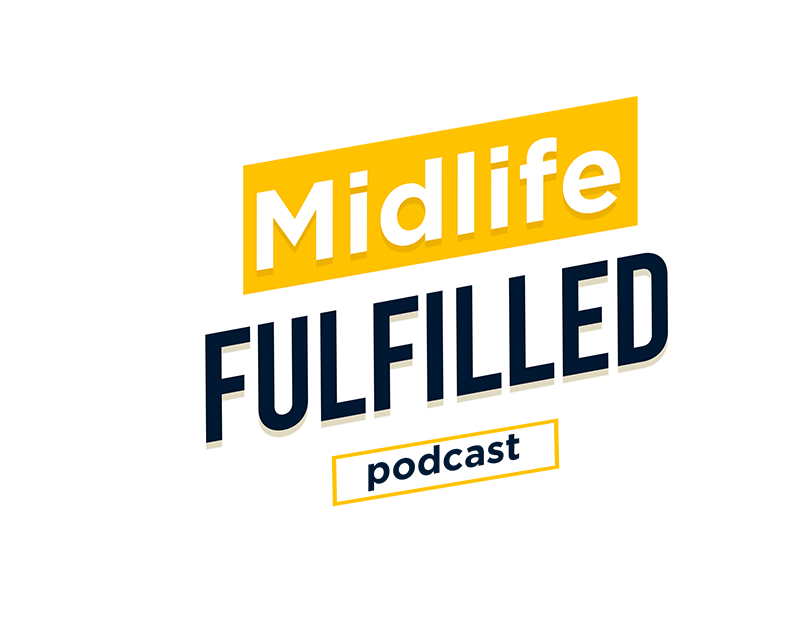Midlife is so misunderstood! The most common definition of midlife is the stage of life between the ages of 40 and about 65. Did you know, there is no universally accepted scientific evidence for this definition? In other words, this common definition has evolved without merit.
Since founding the Midlife Fulfilled podcast, I’ve been on a mission to rebrand midlife as the longest phase of our life, and arguably the most rewarding. However, midlife is not one phase. Following is my definition of midlife. If you’re wondering what I base this on, the answer is logic, common sense, and the fact no science exists to refute my definition. Read it and you decide. If you have a different point of view, share it with me. I welcome the discussion.
I define midlife as the period between young adulthood and old age, a time when we tend to mature and reassess our priorities, goals, and values. While there is no science-backed definition of midlife, most “experts” agree that it is a time of significant changes, that include physical, psychological, and spiritual aspects of our life.
My belief is that people typically go through three distinct phases of midlife, each with its unique challenges and opportunities. These phases are early midlife, mid-midlife, and late midlife.
Before you continue reading my explanation of these three phases of midlife, it’s important to note what midlife is not. Midlife is NOT the midpoint of your life! None of us knows the date of our death. So, how could you possibly describe the midpoint of your life if you don’t know your death date?
Early Midlife: 30s and 40s
The early midlife phase is typically characterized by a sense of maturity, stability, and security, both in our personal and professional life. During this time, we are often at the peak of our career, and we may have started a family or be considering it. This is also a time when we may start to experience physical changes, such as a decrease in energy and metabolism.
One of the primary challenges of early midlife is finding a balance between competing demands, such as work, family, and personal interests. We may also experience a sense of disillusionment or unfulfillment, as we realize that our earlier goals and aspirations may no longer be relevant or meaningful. This is because our goals and aspirations have changed. Keep reading…
Mid Midlife: 50s and 60s
The mid midlife phase is often characterized by a sense of reflection and introspection. By this point, we may have achieved many of our earlier goals and are starting to look ahead to the next phase of life. Some of us experience a sense of satisfaction and fulfillment during this period, as we have more time and resources to pursue our passions and interests.
However, this is also a time when we may start to experience more significant physical changes, such as menopause in women and decreased strength and flexibility. Additionally, we may start to confront our own mortality and begin to think more seriously about our legacy and impact on the world. Our goals and aspirations are different in mid midlife than in early midlife.
Late Midlife: Beyond 60s Until We Enter Our End of Life Season
The late midlife phase is often characterized by a sense of acceptance and wisdom. By this point, we may have typically experienced many of life’s ups and downs and have a better understanding of what is essential to us, because we are more self-aware of our values. We may have retired from our careers and have more time to pursue our interests or spend time with family and friends. Or, we may have started a new career chapter pursuing something entirely different, perhaps a passion or dream we never had time to explore during our core career years.
However, this is also a time when we may experience significant health challenges, such as chronic conditions or mobility issues. The focus may shift from personal pursuits to maintaining health and enjoying quality time with important relationships such as immediate family and close friends. This is also a time when spiritual growth may accelerate due to our preoccupation with mortality. Our goals and aspirations are different in late midlife.
End of Life
The end of life phase is a natural part of the aging process, and it typically involves a decline in physical and mental health and functioning. As we age, we may experience a range of health issues, from chronic conditions such as diabetes and heart disease to cognitive decline and dementia.
The end of life can be a challenging time, for us and our loved ones. However, it can also be an opportunity for reflection, connection, spiritual maturity, and closure. Many of us find comfort in spending time with family and friends, pursuing meaningful activities, and preparing for the end of life through advanced care planning. Our goals and aspirations are different in end of life. They almost never have to do with achieving something. They typically involve showing love for those who are close to you and enjoying their love for you.
My hope is that you have a clearer understanding of midlife. It can be a complex and multifaceted phase of life, and we typically go through these three distinct phases. Understanding these phases can help you anticipate and prepare for the changes that may come with aging and help you navigate the years with greater confidence, peace, and fulfillment.
I urge you to share this with someone you know who is either approaching a midlife phase or in the middle of one. I hope the clarity is encouraging. I welcome your feedback.
Feature image by Andy Dean via Adobe Stock






